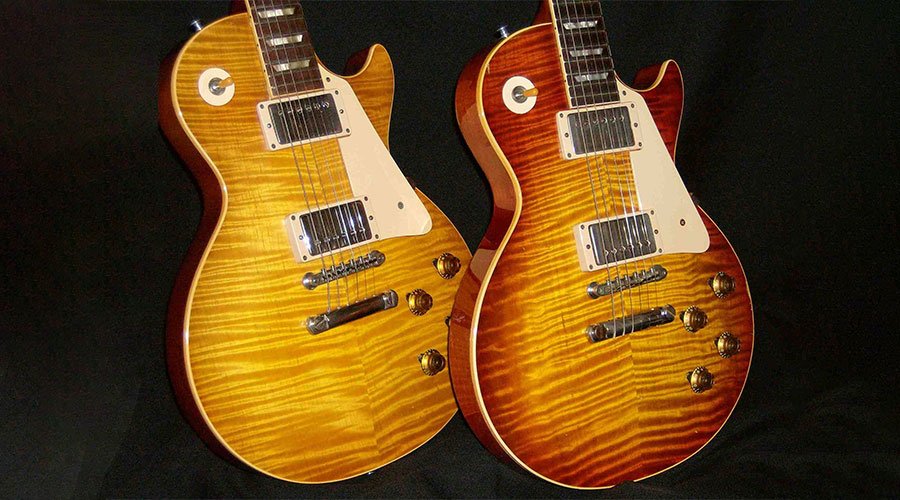
You might be anxious thinking about your next trip to the dentist. Some people are stressed thinking about how to find a new job. Others are worried they won’t be able to get into a good college.
And alas, somewhere in this mix there are those who lie awake at night, tossing and turning, wondering how they can get their hands on a fabled 1959 Gibson Les Paul Standard. The Holy Grail of electric guitars.
And many of them would be willing to pay over $1 million to make that dream a reality.
Why Are Vintage Guitars So Valuable?
Let’s start off by answering the question that frames this whole article: why are vintage guitars so valuable? And why are they sometimes worth more than new ones? It’s obvious that collector’s items like baseball cards and paintings are generally worth more the older they are, but instruments? These are finely crafted tools that don’t just get looked at and admired as they hang from a wall—they actually have a function.
The short answer is that vintage guitars aren’t just rarer, more unique, or better looking than new ones—every once in a while, as fate would have it, they also sound better and perform better as well.
Sometimes, mere mortals like us even have the audacity to describe certain models as perfect.
The Gibson Les Paul
That brings us to the Gibson Les Paul. Before we get into the specifics of the 1959 model, you should know that the Les Paul in general is one of the most coveted electric guitars out there. Why?
In short, it’s possibly the most diversely applicable electric guitar ever created. Not only does it bless its unworthy owners with richly balanced tones and output power that could make said owners black out, it’s also used constantly in nearly every genre: rock, heavy metal, jazz, and reggae are only a few.
What’s So Special About The 1959?
Now that we’ve set some context, let’s get started with a hypothetical: if any serious electric guitarist suddenly came to possess Aladdin’s genie-in-a-lamp, I would bet some good money that their first wish would be for an original, 1959 Gibson Les Paul Standard also known as a “Burst.”
There’s a pretty significant general consensus among real guitarists worldwide that this specific model is the greatest electric guitar ever built. The engineers at Gibson were either really talented or really lucky—but whichever one it was, it’s beyond doubt that the potion they mixed up in 1959 was the stuff of legend.
Now, it’s one thing to say something like that—but now we’re going to dive into all the specifics and take a look at what exactly sets the 1959 Les Paul apart from other guitars.
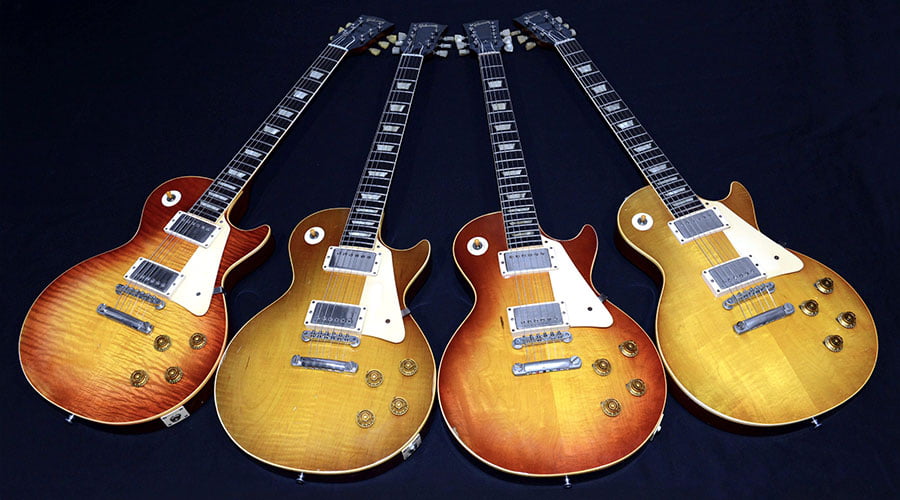
The Body
Wood
Nearly all Les Paul guitars, including those made today, are constructed with two main types of wood: mahogany for the solid body and maple for the top (or front-facing) piece. The 1959 was also constructed with mahogany and maple, though certain subtle differences made it special.
The 1959 Gibson Les Paul Standard used Honduran mahogany from trees that were centuries old. This wood was ideal for carving, and its qualities are so different from the fast-grown mahogany from Fiji plantations used in today’s Les Paul Historics that it can almost be considered an entirely different type of wood. Because the old-growth Honduran mahogany had such perfect carving qualities, carpenters and craftsmen from other industries heavily used it as well, which resulted in a supply shortage. This is one of the main reasons Les Pauls today use the inferior, plantation-grown Fiji mahogany.
Additionally, the 1959 models all had tops made specifically of Eastern maple, which was unusually hard and therefore a better resonator.
In general, wood makes up the majority of a guitar’s weight and material. At the end of the day, a guitar essentially is the wood that is used to build it. Though the differences are subtle, the wood choices used to make the 1959 Les Paul undoubtedly had a marked effect on its tonal superiority.
Construction
The ‘59’s maple top and mahogany body were held together with hot hide glue. Today’s Gibson Les Pauls use Titebond, which is the new industry standard wood glue. The difference? Hide glue is made from animal hide, whereas Titebond is totally synthetic. What makes hide glue superior is the way it absorbs into the wood, hardening to a perfect consistency that actually aids the wood’s vibrations. Hardened hide glue assists the guitar in resonating, while today’s synthetic Titebond has more of a deadening effect. While both glue types are incredibly strong and long-lasting, hide glue is still preferred by most fine wood craftsmen today.
Design
The 1959 Gibson Les Paul had an older style nitrocellulose lacquer finish. This type of finish comes with an aesthetic downside, but a tonal upside. It’s not used on today’s Les Pauls because when it hardens, it becomes brittle and cracks (aka checks) somewhat easily due to rapid change in temperature or humidity. But this brittleness is precisely what makes it a better finish material, although that wasn’t Gibson’s objective at the time. Similar to the nature of the hardened hide glue mentioned above, the lacquer’s glass-like consistency increases the guitar’s overall resonation capabilities.
Another one of the most standout features of the ‘59 is the way the top piece of maple was carved. There’s a certain severity to its contours that has never been replicated in any of Gibson’s subsequent models.
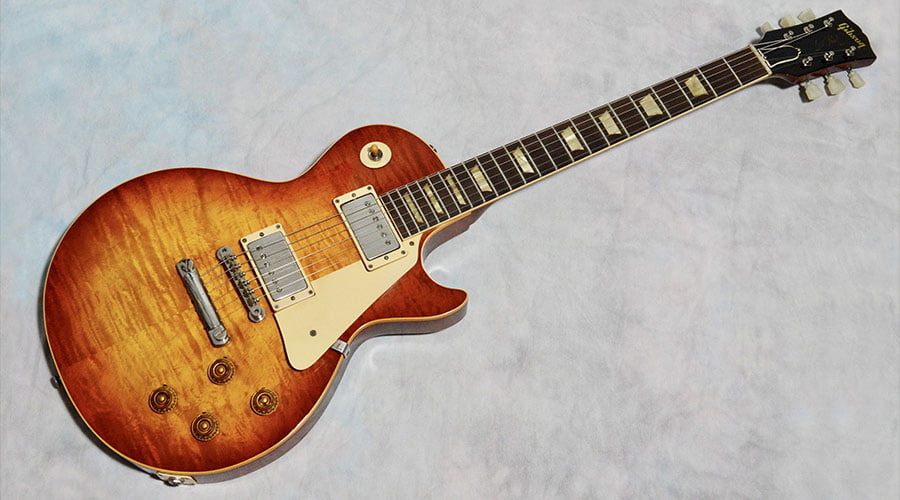
The Neck
Construction
The ‘59’s neck was constructed from the same centuries-old Honduran mahogany as the body, while the fretboard was a solid piece of Brazilian rosewood, a rare wood that’s becoming increasingly valuable.
The truss rod, which is the thin piece of metal that runs the length of the neck and strengthens the guitar, was a single-action truss. Because a single-action truss rod is simpler and takes up less space than a dual-action, a strip of maple was used inside the neck to support and hold the truss rod in place.
The ‘59 had a long neck tenon, which strengthened the neck joint. It also increased the guitar’s sustain capabilities, as the long tenon gave the joint a significant wood-on-wood contact area.
Hot hide glue was used again here, to glue the fretboard to the neck as well as to glue the neck itself to the body.
Design
If you were to cut a modern guitar’s neck midway through and look at the cross section, it would look like a “C”. This is called neck profile, and the most standard one for guitars worldwide is the C profile.
The necks on the 1959 Les Pauls were all hand carved, so there are some small variations from guitar to guitar—but by and large, the ’59s all had D profiles. A “D” profile is essentially a less chunkier version of the C, with slightly small “shoulders”, and they varied between 0.860″ and 0.895″ under the first fret, and 0.960″ and 0.995″ under the 12th. Thicker neck profiles like rounded C or U are usually preferred by technical guitarists and soloists, as they’re ideal for anchoring the thumb on the back of the neck.
The fretboard was curved to a 12” radius, and the inlays were of Italian-made cellulose. The frets themselves were made of 1⁄10” thick fretwire, and the nut was made of dense nylon. The scale length, which is the length of the actively vibrating portions of the strings, was about 24 9/16”, though according to Gibson’s official specifications at the time, it was supposed to be 24 12/16”.
The Hardware
Parts & Materials
Here are the specific hardware types and materials used on the 1959 Les Paul:
- The bridge was a Tune-o-Matic no-wire ABR-1 nickel-plated bridge. And the bridge saddles (where the string actually meets the bridge) were nickel or gold plated yellow brass.
- The bridge anchor studs were made of solid steel. These studs were a full inch long, as opposed to today’s, which are 7/8”. This extra 1/8” further increased overall guitar resonation.
- The tailpiece was aluminum, while the tailpiece anchor studs were nickel-plated steel.
- The thumbscrews consisted of nickel-plated brass wheels with a steel thread insert.
Pickups
The 1959 Gibson Les Paul was built with two PAF pickups (or humbuckers). PAF stands for “patent applied for,” which should show you just how novel this technology was at the time! Gibson used an automated Leesona 102 winder, along with purple colored #42 AWG wire and long Alnico A5 magnets.
It’s important to note that many of the most prized vintage instruments around the world have certain endearing qualities that are the result of the hand-made processes that were popular before flawless automation became the norm. The 1959 Les Paul is no exception; experts in the field know that the tone of its pickups differ slightly from guitar to guitar.
Basically, most pickups consist of one or two pieces of thin metal wire, wound around into a coil shape. Because the ol’ Leesona 102 winder would constantly malfunction, Gibson workers took to manually assisting the winding process. All of these pickups that were manually wound ended up with subtle differences between one another, resulting in a certain specialness in the tone of each ’59 Les Paul.
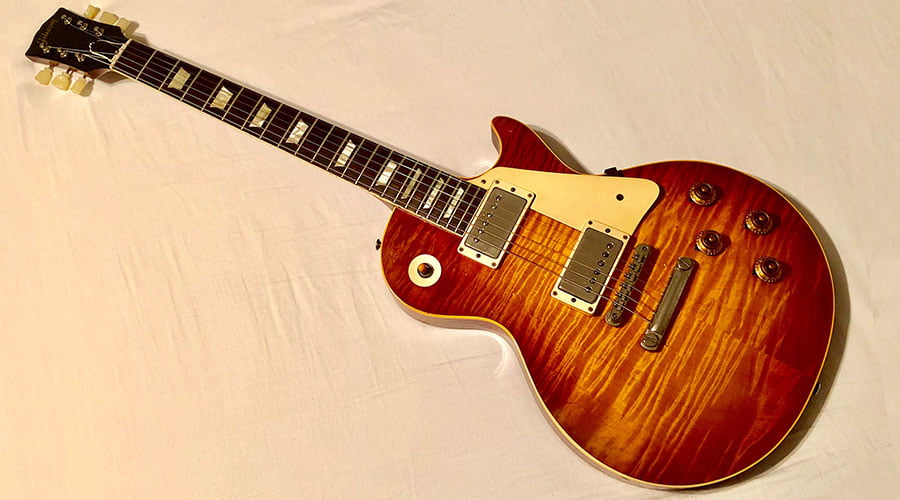
Famous Guitarists Who Played The 1959 Les Paul
If you compiled a list of every famous guitarist who played a modern or vintage Les Paul, and then narrowed down your list to include only the ultra-talented mega-stars, you’d find that, almost invariably, they all owned and preferred the ’59. Here are just a few examples:
- Jimmy Page, lead guitarist for Led Zeppelin, affectionately called his ’59 Les Paul his “number 1.” And this is coming from the guy who played Stairway to Heaven, one of the greatest rock song of all time! Effectively, he could’ve had his pick of any guitar in the world—but his 1959 Gibson Les Paul Standard was his baby.
- Billy Gibbons, guitarist and singer for ZZ Top, nicknamed his ’59 Les Paul “Pearly Gates.” Amazingly, he has not yet swapped out a single part on the guitar, preferring to use it exactly as it was when it left the factory. Experienced guitarists will appreciate the significance of this.
- Aerosmith guitarist Joe Perry now owns around 600 guitars, but of course his all-time favorite is his 1959 Gibson Les Paul Standard in dark burst finish, which he used heavily during his career with Aerosmith. This particular guitar had its fair share drama attached to it, as is recounted below:
- Guns N’ Roses guitarist Slash is notorious for using a replicated 1959 Les Paul, especially on Guns N’ Roses’ recorded tracks. However, he was taken aback one day when he saw a picture of Joe Perry with a 1959 Gibson Les Paul Standard. He became obsessed with it, and eventually bought it for $8,000 in 1988 while on tour in Japan. Apparently, Joe Perry was in a bad spot with money and was forced to sell it several years prior. Slash loved the guitar, which can be seen in Guns N’ Roses’ November Rain video. In the end though, Perry regretted selling it, and so Slash gave it back to him as a 50th birthday gift.
The 1959 Les Paul Today
It’s safe to say that the prestige of the 1959 Les Paul is at its peak today. Gibson estimates it sold 643 of them in 1959, though today only about 157 have been verified. The quality and uniqueness of the guitar, as well as its rarity, result in an astounding price tag: think $200,000 at a minimum for a specimen in good condition.
How much did a Les Paul cost in 1959? On average, you could buy one for the hefty sum of $265. If you wanted the shapely “faultless” Lifton case with pink interior to go with it, tack on another $42.50. Of course, inflation is a thing—but even adjusting for inflation, you’d be looking at around $3,170 for a guitar-and-case package deal. This is roughly equivalent to the cost of a new Les Paul Standard today.
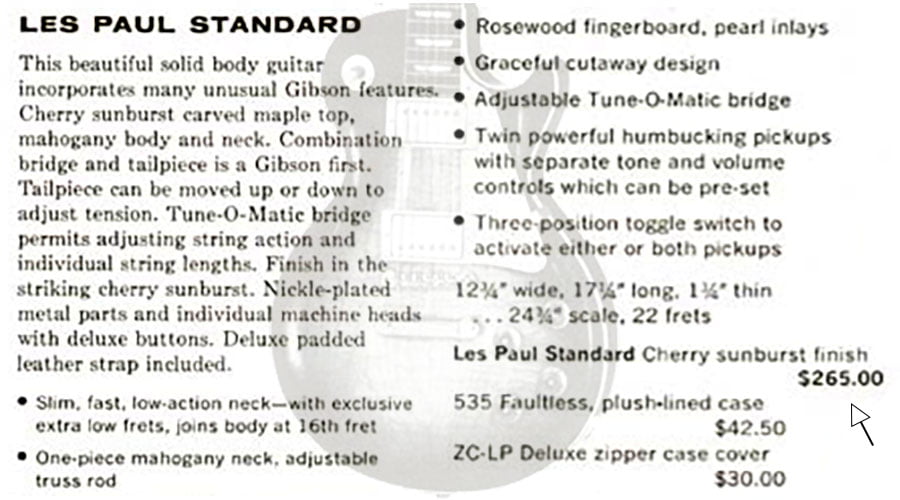
To conclude, let me tell you that the 1959 Gibson Les Paul Standard is so legendary that ZZ Top guitarist Billy Gibbons turned down an offer of $5 million for his, and Gibson has offered to pay $59,000 (’59—get it?) to anyone who can present a copy of its 1959 shipping ledger.
So yeah—it’s a pretty decent guitar.
Frequently Asked Questions
What is a 1959 Les Paul worth?
A 1959 Gibson Les Paul Standard in good condition will fetch a minimum of $200,000 today, though prices vary. Some especially well-preserved models could be worth over $500,000, and a few well-known guitarists have turned down offers that reached well into the millions.
How many Les Pauls were made in 1959?
Gibson believes that it shipped 643 Les Paul Standards in 1959, though the official shipping ledger has gone missing. If you find it, Gibson will pay you $59,000 for it!
What is the difference between a 1958 and a 1959 Les Paul?
The differences between the ’58 and ’59 Les Pauls are subtle, but recognizable if you know what you’re looking for. In particular, the ’59 had larger frets than the ’58, and its maple top was cut in such a way as to reveal more of the wood’s natural figured patterns. Also, the ’58’s neck has a C profile, while the ’59’s neck has more of a D profile.
Share your thoughts in our forum! 💬
👉 Introduce yourself and show off your Les Paul and other gear.
Share this post with your friends using these one-click sharing options:
👉 Click here to share on Facebook.
👉 Click here to share on Twitter.
👉 Click here to share on LinkedIn.
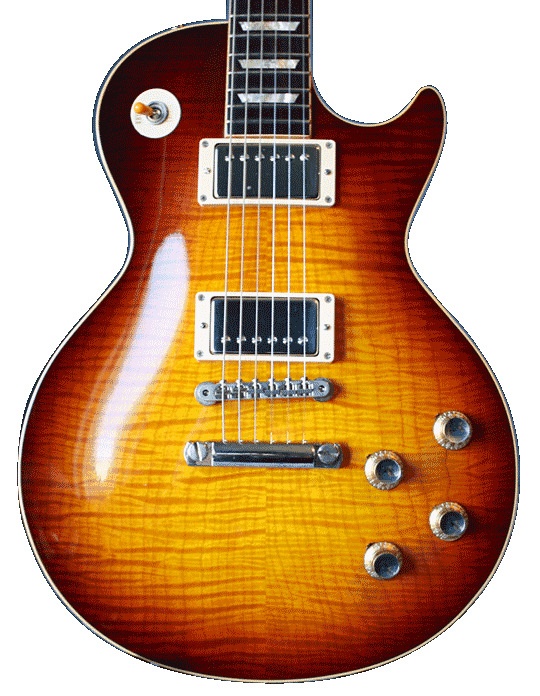
Get the latest reviews, guides and videos in your inbox.